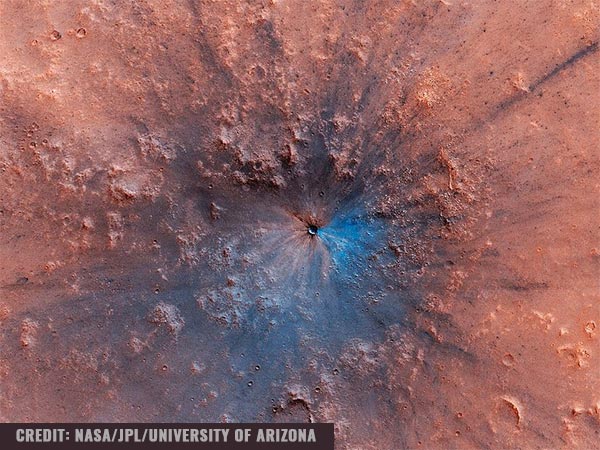Study: Heavy rainfall flooded lakes and rivers on ancient Mars

Researchers from the University of Texas at Austin and the National Aeronautics and Space Administration (NASA) said that precipitation levels reached up to 520 feet per rainfall. Water collected in lakes and river valleys that were sometimes filled to the brim, flooding the surface.
Early Mars was initially considered a dry planet. But recent research suggested was once present billions of years ago.
According to the European Space Agency (ESA), evidence shows that Mars previously experienced catastrophic floods. These floods carved the large channels in present Mars that drained into the northern plains, supporting the existence of an ancient ocean in the northern hemisphere.
But scientists are still puzzled by the climate of ancient Mars and the amount of water that existed at the time. The presence of riverbeds and paleolakes indicates that Mars experienced significant rainfall or snowmelt. But planetary scientists were unable to reproduce an ancient climate model with large amounts of water that existed long enough to account for the current geologic features of Mars.
“Climate models have trouble accounting for that amount of liquid water at that time. It’s like, liquid water is not possible, but it happened,” said lead author Gaia Stucky de Quay.
For the study, the researchers examined 96 open-basin and closed-basin lakes and their watersheds to determine precipitation levels during Early Mars. These land features are thought to have formed between 3.5 billion and 4 billion years ago.
They measured lake and watershed areas, as well as lake volumes, using satellite images and data on Martian topography. Then, they calculated potential evaporation levels to figure out how much water was needed to fill the lakes.
Results show that precipitation levels were between 13 to 520 feet per single bout of rainfall. Rainfall along this range was able to fill the Martian lakes and river valleys and even provide enough water to breach the lake basins.
Stucky de Quay said that the results of their study can be useful for determining which climate models are accurate.
Co-author Tim Goudge also said, “Not only do these results help us refine our understanding of the ancient Mars climate, but they also will be a great resource for putting results from NASA’s Mars 2020 Perseverance rover into a more global context.”
Upcoming mission may provide clues to water and life on Mars
No rock samples had ever been brought from Mars to Earth. This absence of a tangible Martian evidence is cause for the competing models and findings among studies. Often, researchers had to rely on satellite and rover data or else examine meteorites that are purported to have originated in Mars.
That could soon change with NASA’s Mars 2020 mission, set to launch in February 2021. The rover Perseverance will primarily look for signs of life and collect rock and soil samples that will be returned to Earth. Its landing site will be the Jezero Crater.
According to scientists, Jezero had once been flooded with water and was home to an ancient river delta. Previous research provided evidence that suggests water carried clay minerals from the surrounding area into the crater lake.
And with the presence of water, it’s possible that microbial life once lived in the crater. To find out, Perseverance will collect sediments taken from the lakebed or the shoreline of the crater. (Related: NASA to announce LIFE on Mars in the next 2 years.)
Once scientists finally have enough samples, they may finally provide answers to some of the mysteries surrounding Mars.
Sources include:


